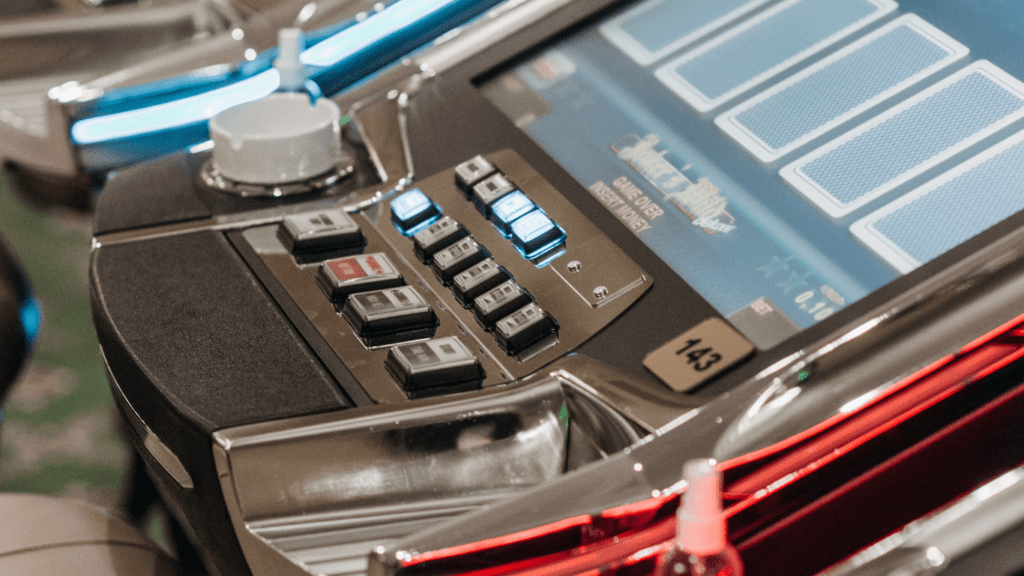Understanding Slot Machines
Slot machines captivate players with their bright lights and engaging sounds in the noisy atmosphere of casinos. I explore their workings to demystify the science of gaming outcomes.
The Basic Mechanics
- Slot machines operate using a combination of mechanical design and digital technology.
- Central to their function is the Random Number Generator (RNG), a software that continuously generates random numbers.
- These numbers determine the symbols that appear on the reels when a player spins.
- Unlike popular belief, each spin is independent, ensuring every game is fair and unpredictable.
- The RNG replicates randomness with impressive precision, maintaining the machine’s reliability.
Historical Development of Slot Machines
- Slot machines have evolved significantly since their inception in the late 19th century.
- The original models, like the Liberty Bell created by Charles Fey in 1895, used mechanical reels and levers.
- Early machines featured simple designs and paid winnings in coins, influencing modern gaming.
- During the 1960s, technological advancements led to the introduction of electro-mechanical slot machines, adding lights and sounds.
- The shift to video slots in the 1980s revolutionized the industry, allowing for more complex and varied gaming experiences, ultimately paving the way for today’s digital and online slot machines.
The Science Behind Slot Machine Payouts

Slot machine payouts stem from complex algorithms, ensuring balance in entertainment and profitability. While luck plays a role, understanding these mechanisms offers deeper insights.
Random Number Generators (RNG)
Random Number Generators ensure each spin’s outcome is independent and unpredictable. RNGs continually generate numbers, even when no one plays, to maintain randomness.
This mechanism guarantees fairness as each result stems from an extensive sequence of numbers processed in milliseconds. Regulatory bodies test RNGs to ensure they meet required standards, making them essential for fair gameplay in both physical and online slots.
Return to Player (RTP) Rates
Return to Player rates indicate the percentage of wagered money a slot machine returns to players over time. For example, an RTP of 95% implies that for every $100 wagered, the machine pays back $95 on average.
Casinos use RTP rates to balance the odds of winning with house profit margins. While RTP provides a long-term perspective, individual gaming sessions can vary significantly from these averages. Understanding RTP helps players make informed choices about the potential returns from different games.
Psychological Aspects of Slot Machines
Psychological factors significantly impact how players engage with slot machines, shaping both experiences and perceptions.
The Impact of Near Misses
Near misses, where symbols almost align for a win, encourage continued play. The brain’s reward system perceives these near wins as enticing, much like actual wins, according to a study published in the Journal of Gambling Studies. These moments create a sense of anticipation, making players more likely to keep playing despite actual outcomes.
The Role of Sound and Visual Effects
Sound and visual effects in slots enhance excitement and engagement. Bright graphics and dynamic animations capture attention, while upbeat sounds signal wins, even if the payout is minimal. Research from the University of Alberta shows these elements stimulate reward-related brain activity, increasing the tendency to misperceive losses as wins, prolonging playtime and enhancing the gaming allure.

 Hisakonic Schroeder contributed extensively to the research and content creation at Wild Gamble Greed, focusing on high-stakes poker and slot strategies. Hisakonic’s ability to break down complex concepts into accessible, actionable insights has been key to the platform’s appeal. His dedication to helping players achieve success while maintaining control has reinforced the platform’s mission of promoting smart, responsible gambling practices.
Hisakonic Schroeder contributed extensively to the research and content creation at Wild Gamble Greed, focusing on high-stakes poker and slot strategies. Hisakonic’s ability to break down complex concepts into accessible, actionable insights has been key to the platform’s appeal. His dedication to helping players achieve success while maintaining control has reinforced the platform’s mission of promoting smart, responsible gambling practices.